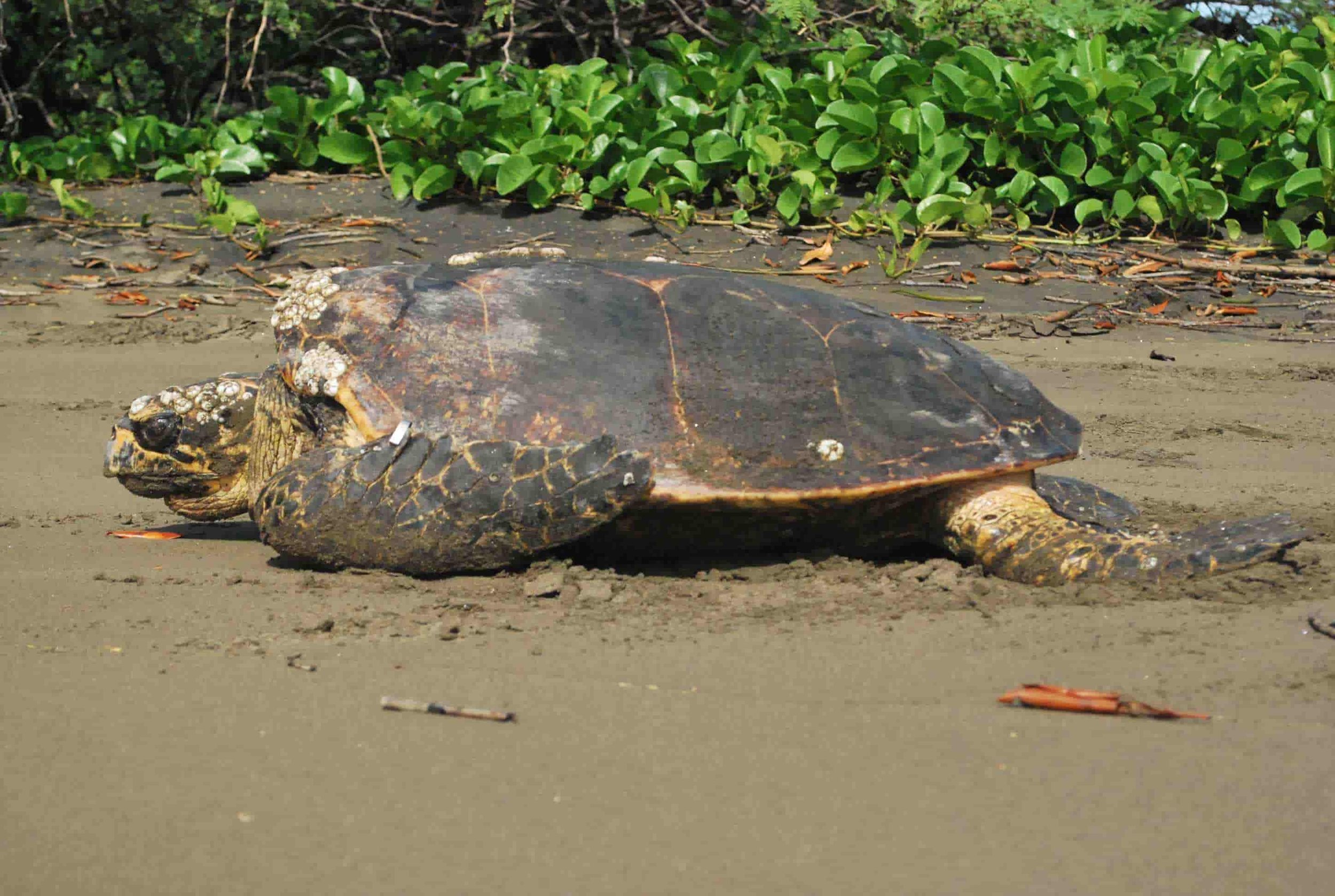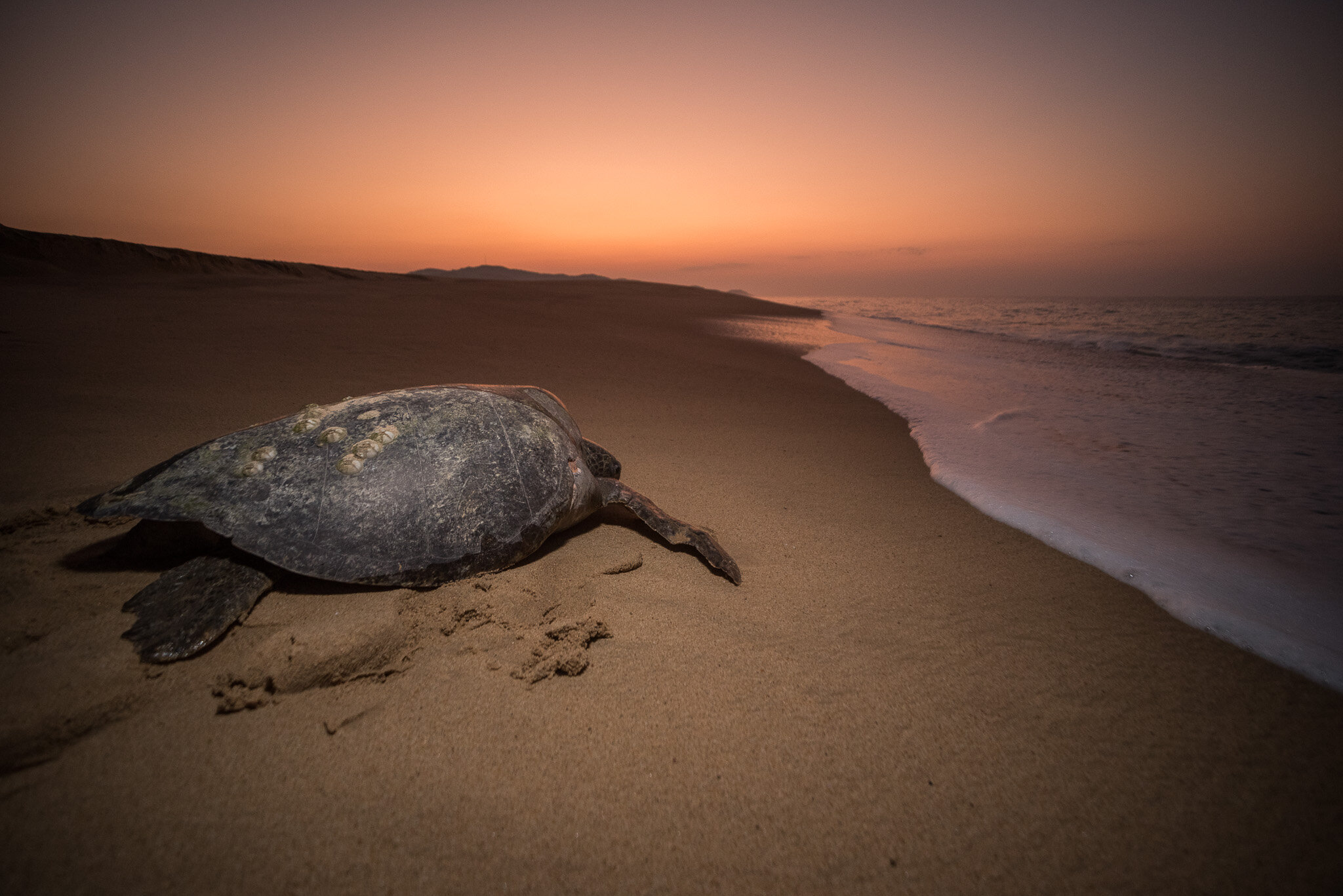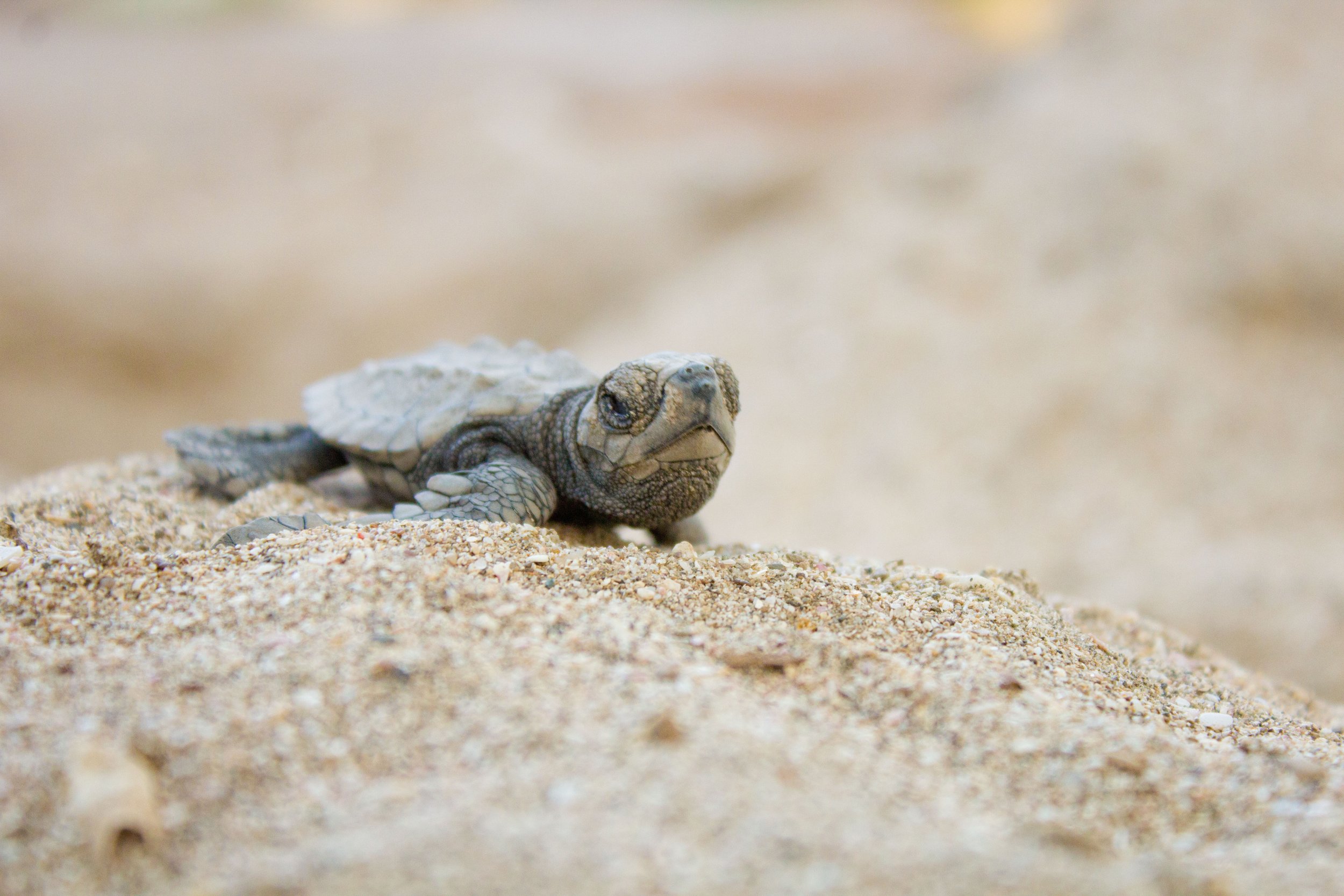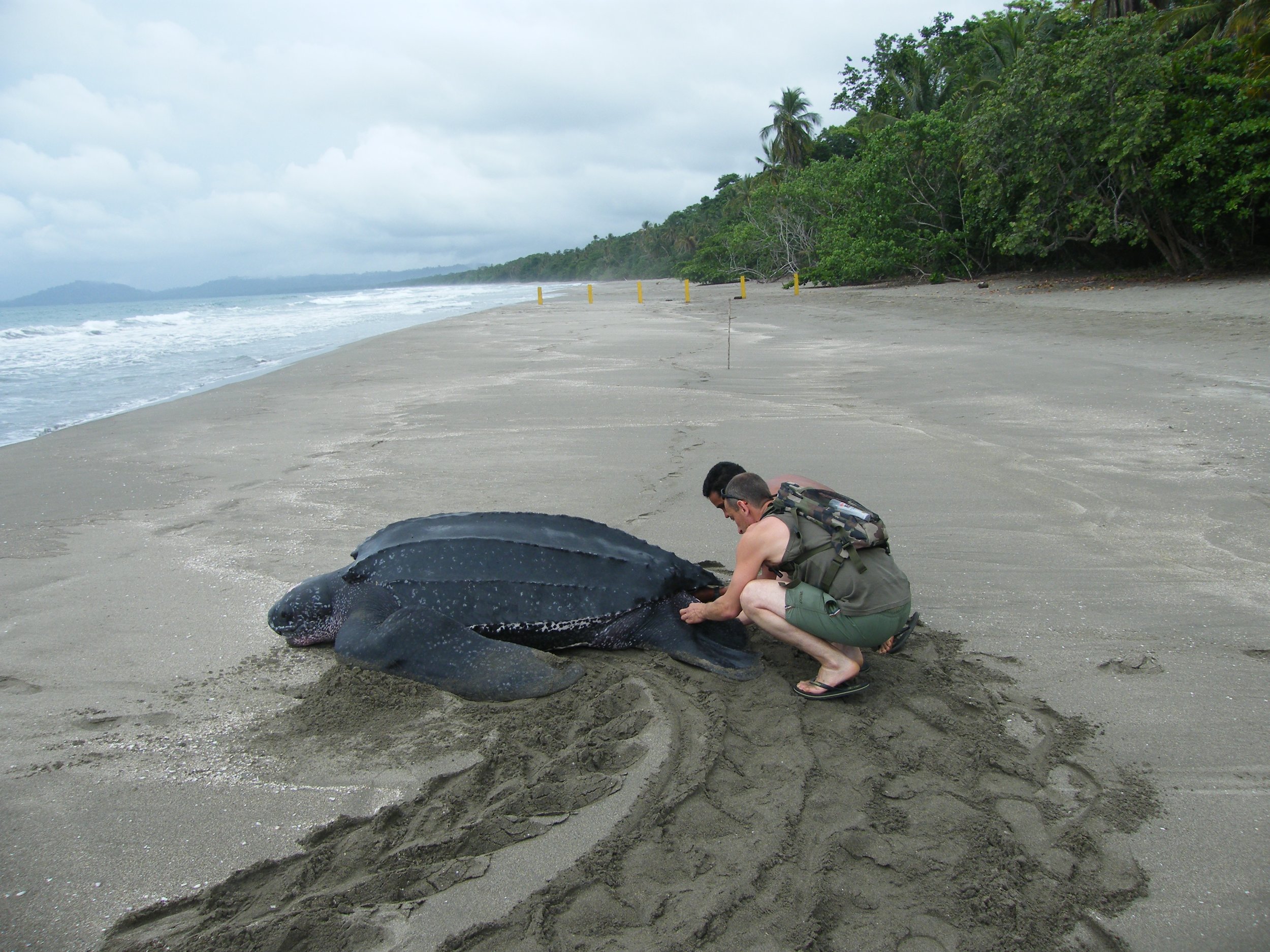
Sea Turtle Facts
From leatherbacks to loggerheads, six of the seven species of sea turtles are threatened or endangered at the hand of humans. Sadly, the fact is that they face many dangers as they travel the seas — including accidental capture and entanglement in fishing gear (also known as bycatch), the loss of nesting and feeding sites to coastal development, poaching, and ocean pollution including plastic.
These creatures are well-adapted to the ocean though they require air to survive. Their size varies greatly, depending upon species — from the small Kemp’s ridley, which weighs between 80–100 pounds, to the enormous leatherback, which can weigh more than 1,000 pounds.
5 facts About Sea Turtles
All seven species are considered threatened or endangered. Two are critically endangered (hawksbill and Kemp’s ridley), one is endangered (green and and three are threatened (leatherback, olive ridley, and loggerhead). Flatbacks are listed as data deficient on the IUCN Red List but are listed as endangered in Australia.
It is estimated that only one out of 1,000 hatchlings survives to be an adult. They have many natural predators including birds, crabs, fish, and mammals like racoons. But the female adults can lay thousands of eggs over their lifetimes, so at least a few of them survive to maintain the species.
The sex of sea turtles, like other reptiles, depends on the temperature in the nest. That temperature is generally around 82 degrees F (29 degrees C) though that can vary by species and location.
Sea turtles don’t have a favorite food (though most will eat jellyfish.) Each species focuses on different prey for food; the leatherback eats mostly jellyfish, greens primarily eat seagrass, loggerheads prefer crustaceans, and hawksbills eat primarily sea sponges.
Some sea turtles migrate very long distances while others stay close to home. Leatherbacks and loggerheads can travel thousands of miles each year, while greens and olive ridleys have shorter migrations, while hawksbills rarely leave a relatively small area.
Habitat & Diet
Sea turtles live in almost every ocean basin throughout the world, nesting on tropical and subtropical beaches. They migrate long distances to feed, often crossing entire oceans. Some loggerheads nest in Japan and migrate to Baja California Sur, Mexico to forage before returning home again. Leatherbacks are capable of withstanding the coldest water temperatures (often below 40˚F) and are found as far south as Chile and as far north as Alaska.
These reptiles spend their entire lives at sea, except when adult females come ashore to lay eggs several times per season every 2 to 5 years. After about sixty days, baby sea turtles (known as "hatchlings") emerge from their sandy nests and make their way to the ocean —attracted to the distant horizon. The juvenile turtles spend their first few years in the open oceans, eventually moving to protected bays, estuaries, and other nearshore waters as adults.
Each species relies on a different diet: greens eat sea grasses; leatherbacks feed on jellyfish and soft-bodied animals; loggerheads eat heavy-shelled animals such as crabs and clams; hawksbills rely on sponges and other invertebrates; and the Kemp’s ridley prefers crabs. Learn more about sea turtle diets.
Human Threats
These ancient creatures have been on Earth for more than 100 million years — even surviving the dinosaurs when they became extinct 65 million years ago. Among the threats these marine reptiles face are entanglement, habitat loss, and consumption of their eggs and meat.
Sea turtles often drown when caught in fishing gear. Coastal development can destroy important nesting sites, impact coral reefs, and artificial light from houses and other buildings attracts hatchlings away from the ocean. Pollution like plastic bags are often mistaken for food such as jellyfish and ingested, which blocks their intestines and potentially kills them. In some countries, they are hunted for their meat and shells and their eggs are eaten.
Sea Turtle Information:
What is SEE Turtles?
We're a nonprofit organization that protects sea turtles through conservation travel and volunteer tours, our Billion Baby Turtles, Sea Turtles & Plastic, and Too Rare To Wear programs, our education programs, and by promoting inclusivity in the sea turtle community. Our award-winning programs help save sea turtle hatchlings on important nesting beaches around the world, recycle plastic from turtle habitats, work with the tourism industry to end the turtleshell trade, and educate students and travelers about how to help save sea turtles. Learn more about our organization.
Photo credits: Brad Nahill/SEE Turtles, JuanMa Gonzales, Neil Ever Osborne





